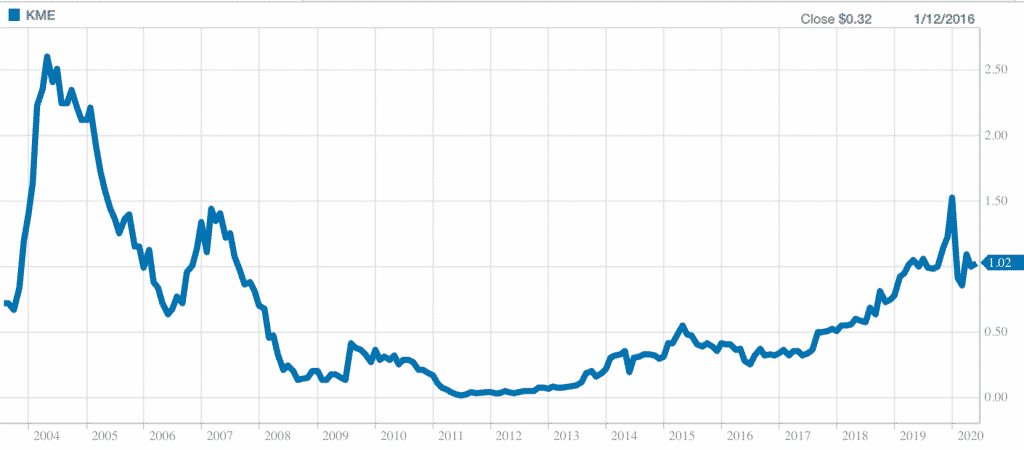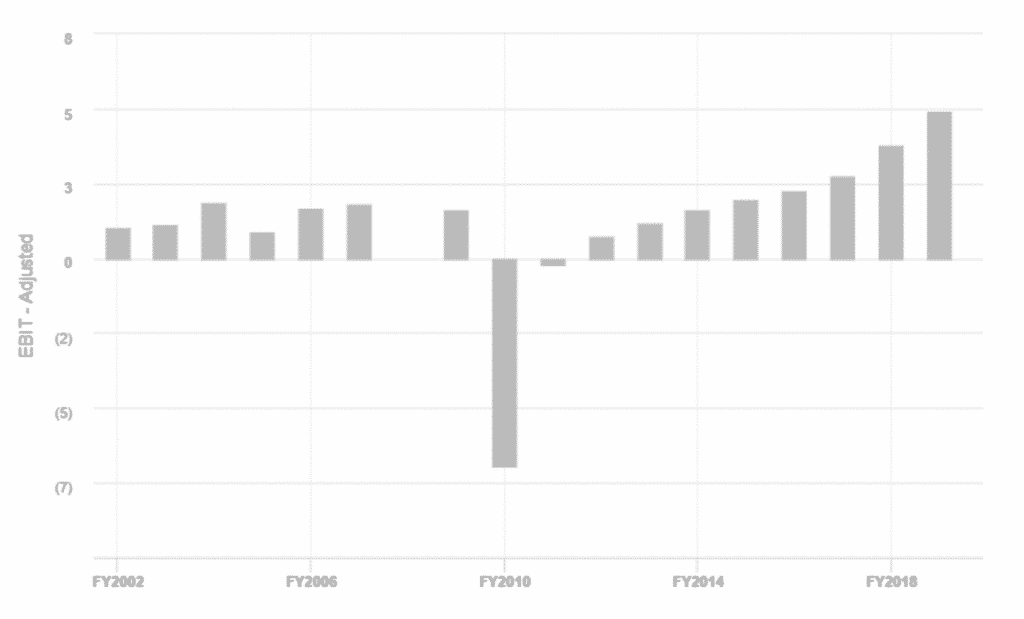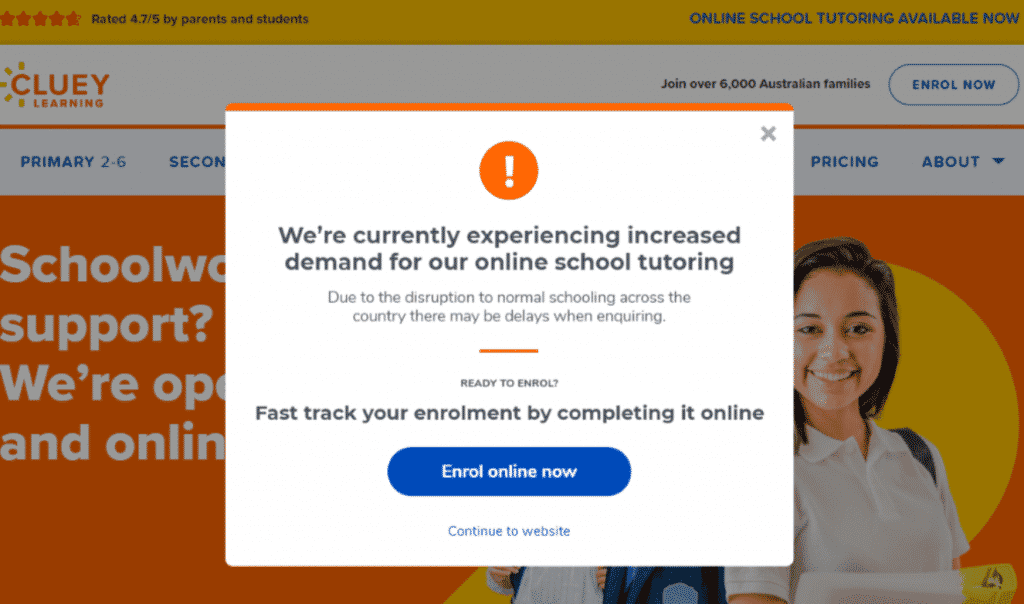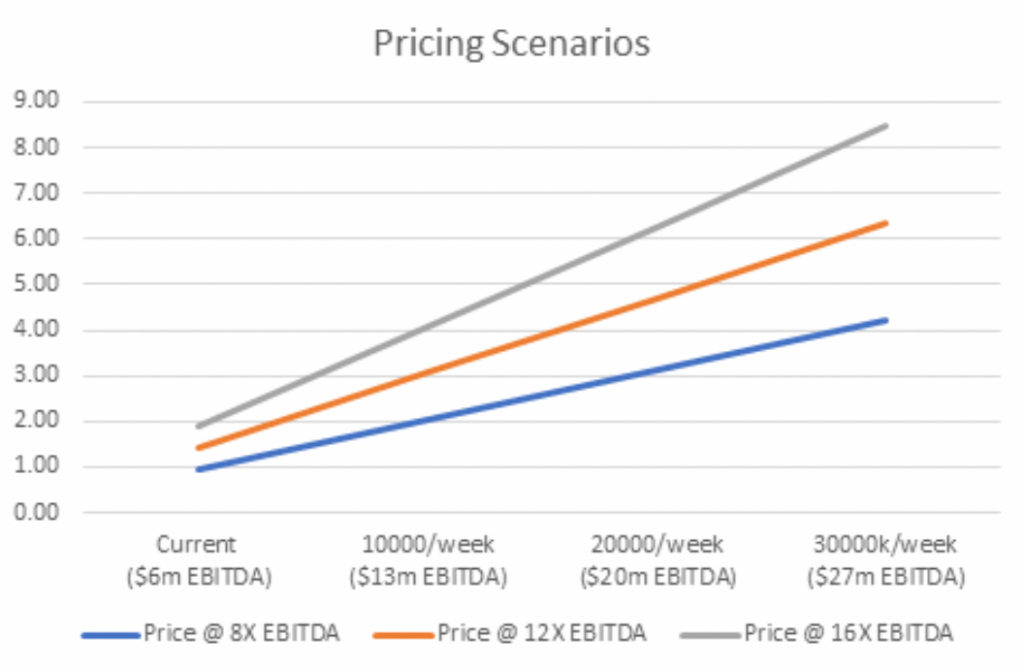Kip McGrath Education Centres Limited (ASX: KME) has been in the DMX Capital Partner’s portfolio since 2017, and has been a successful investment so far. However, recent events have accelerated its online strategy, and we believe, post COVID.19, that the company should be looked at in a new light.
Across various industries, the move to online or digital delivery of products and services has led to faster growing, higher margin, more scalable and efficient businesses. In this note, we explore what the pivot to online tuition may mean for KME.
Kip McGrath: History of a Founder-Lead Business
KME is a franchisor that provides catch-up English and Maths tuition for school aged students. The company was founded in Maitland, NSW in 1976 by Kip and Dugnea McGrath. It listed in 2003 at 50c with a market cap of $8.5m and with 378 franchised centres. Today there are around 600 franchised tuition centres around the world.
In 2007, Kip’s son Storm, was promoted to CEO. In 2010, Storm introduced a percentage of revenue franchise model whereby the franchisee pays to KME a percentage of tuition revenue rather than a fixed fee previously charged. This was the beginning of a strong financial turnaround for the company. Given the consistent earnings growth since 2010, it has been a highly successful strategy, providing strong returns for shareholders. There is an insightful article by Alan Kolher which suggests Storm saved the company.
The two charts below highlight how closely correlated KME’s share price has been to earnings over the last 10 years, with 2010 being the low point for earnings and the share price.


Kip McGrath Education Centres Today
KME’s success as a franchisor has been built around the proven teaching methodology it has developed, and the lesson materials and administration services it provides to its franchisees. This enables the franchisees, who are generally ex teachers, to really focus on their students. Until recently, students were predominantly taught via face to face lessons at the 600 KME tuition centres.
KME has had a nascent online business for a number of years, but it had failed to gain much traction. Storm commented in the FY19 Annual report … “Online tutoring is continuing to grow steadily with 2,500 lessons per month a pleasing 67% increase from 1500 last year. Parents are still uncertain about online tutoring and prefer face to face however this is changing as parents see the convenience and the excellent outcomes their children achieve.”
Amongst the DMX team members, there are a couple of us with young families. Until a few months ago we would have completely agreed with this sentiment and shared the concerns and scepticism around online tuition.
However, along came COVID.19.
During the COVID.19 lockdown, in addition to having school lessons online, our children have had tuition lessons from martial arts to violin to acrobatics all taught via online lessons. As parents, we are now converts. The convenience and not having to worry about driving and car-parking makes the experience much more efficient time-wise. As parents, it has also made us more engaged as it enables us to be in the background monitoring progress as or if required, where at face-to-face lessons parents generally are not allowed.
The impact of COVID.19 on KME has been spectacular. The number of lessons delivered across the KME network online increased more than 20 fold, from less than 1,000 per week in 2019 to 20,000 per week in May 2020. Given the successful take-up and positive feedback from parents and students, the company is now pivoting its focus from face-to-face to online, and, importantly is also ramping up its ability to deliver online lessons directly, rather than having franchisees deliver the lessons.
This pivot has significant potential to increase revenue and profits going forward for two reasons:
- With online learning becoming mainstream, the company can now look to sell into the geographies not covered by face-to-face learning centres. KME estimate that 60% of school-age students fall into this category of not having a KME tuition centre close by. KME’s market has therefore more than doubled.
- Many existing franchisees do not wish to perform online learning.
In both cases, KME can now provide these lessons directly themselves (rather than by a franchisee) and receive significantly higher revenue and margins.
While the pricing of a lesson stays the same (~$60 per lesson), we understand the margin to KME increases from ~$4.00 for a face-to-face lesson delivered by a franchisee to ~$18 for an online lesson delivered directly by KME (given KME now collects 100% of the $60 revenue per lesson, rather than just the much smaller percentage they historically collected as franchisor). So for each additional 10,000 lessons per week that KME is able to teach online from their corporate centres, this would equate to around $24m in additional annual revenue and $7m additional annual EBITDA. We calculate EBITDA of $7m assuming an additional 10,000 lessons a week, across 40 teaching weeks per year, with an incremental EBITDA per lesson of $18. We rounded down to reach $7m.
For context, KME pre COVID.19 was expected to make about $6m EBITDA, from delivering over 36,000 lessons a week across the KME network (predominantly franchisee delivered). 10,000 additional lessons per week would therefore be a 28% increase in total lessons delivered.
A Top Online Learning ASX Stock?
KME are not the only player in the space in Australia. Online start-up Cluey has recently entered the space. As can be seen from the screenshot below, there appears to be plenty of demand for online tuition. While a fellow online tuition player may be seen as a threat, online is still a very small percentage of the overall lessons performed each week. The tutoring business is very much a cottage industry with many one-person businesses. These one-person businesses are unlikely to have the resources or motivation to move online. There is still plenty of market opportunity and KME is well placed to grow with its many years of digitised courses and a strong brand and marketing budget.

Kip McGrath Capital Raising
To leverage the current environment, KME has raised capital via an institutional placement that we participated in. The funds will be applied to new hires, new advertising material and spend, IT resources, and potentially buying a UK centre to advance its online learning capabilities in the UK.
We suspect this strategy will mean a lower dividend in the short-term, but higher top-line growth if it is successful.
While we see KME’s short term earnings outlook to be under pressure, as face-to-face lessons have reduced while the marketing/staff spend for online has increased, we see the medium-term revenue and earnings profile to be potentially very exciting. Whilst there is much work to do, we believe a successful roll-out of corporate delivered online lessons could see KME’s earnings be multiples of the current earnings base.
We lay out some conceptual pricing and earnings scenarios if KME is able to capitalise on the online opportunity, in the chart below.

At its pre-COVID EBITDA rate of around $6m (based on around 36,000 lessons a week), the KME share price is circa $1. This implies an EBITDA multiple of circa 8x. If the company can deliver an additional 10,000 weekly online lessons, we see EBITDA increasing to $13m, and at current EV/EBITDA multiples, the price would rise to $2 (see blue line).
Whilst forecasting any change of business strategy is challenging, and we don’t have a timeframe for KME delivering this increased EBITDA, COVID.19 has effectively doubled KME’s addressable market. So we don’t see adding an additional 10,000 online lessons (28% increase on the 36,000 pre-COVID.19 lessons) as being an unreasonable assumption. We also include the scenarios whereby KME delivers an additional 20,000 (56% increase) and 30,000 (83% increase) lessons per week online.
For the last several years, KME has been seen as a growing, but unexciting, services business. If the market starts to view KME as a high growth, higher margin, online business, we could see KME trade on a much higher multiple. Therefore, we have highlighted two other share price scenarios, being EBITDA multiples of 12x (orange line) and 16x EBITDA (grey line). While these may seem fanciful compared to KME’S historical multiple, we keep an open mind given the multiple ascribed to other online players.
We understand online tuition competitor Cluey (mentioned above) is loss-making and had previously been valued at around $100m (pre-COVID.19), having raised $31m in new equity in 2019 and 2020, and had been rumoured to be considering an ASX IPO in late 2020.
In February 2020, Cluey was reported to be delivering 2,000 online lessons a week. Given the recent success with online at KME, we would expect that Cluey has also grown its numbers, and can now possibly command a higher valuation. By contrast, KME currently has a valuation of around $50m, is doing 20,000 online lessons a week, and has a significant global brand and business. A Cluey IPO may well highlight the relative value of KME.
Summary
KME is a great example of how COVID.19 has changed consumer preferences. COVID.19 certainly has changed the way we think about the delivery of tuition services, and has opened up a whole new market and opportunities for KME. As our Price Scenario chart highlights, the earnings opportunity now available to KME is immense, and provides plenty of upside from the current price if Management can execute and take advantage of this opportunity.
This post is not intended as financial advice but rather a research summary. You should not base a buy or sell decision on this post. The author’s fund, DMX Capital Partners, owns shares in Kip McGrath Education Centres. You should click here to read our detailed disclaimer.
Save time at tax time: A Rich Life depends on Supporters to pay for its free content, so if you’d like to try Sharesight, please click on this link for a FREE trial. It saves me heaps of time doing my tax and gives me plenty of insights about my returns. If you do decide to upgrade to a premium offering, you’ll get 4 months free (the best deal available, I’m told) and we’ll get a small contribution to help keep the lights on.
If you’d like to receive a occasional Free email with more content like this, then sign up today!